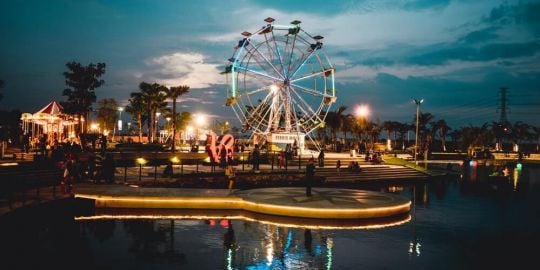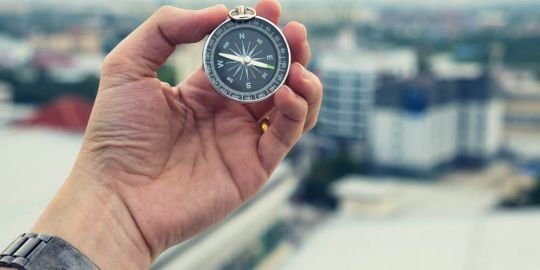1. because there are one and one half million motorcycles, making it the third most polluted city on the planet
2. because the city is tearing up so many streets to install water pipes or to widen the narrow streets.
3. because there are power cuts of up to 12 hours per day and people resort to use diesel generators which again add to pollution.
4. because anti pollution laws norms are non existent or not enforced
Why nepal is so polluted and dangerous for your health?
Nepal isn't a city; it's a country, a beautiful country. Kathmandu is the capital city and it sits at the lowest point of the valley so it is polluted.
Imagine what your country would look like if the first conquerors would have brought plastic bags with them. Nepal had been totally abandoned by the world stage until 1953 when Sir Edmund climbed Mt. Everest.
Nepal is a with breathtaking views, a safe, rich culture and currency that makes it one of the best values on the planet.
**
I tried to upload a picture to show you how amazing the views are, but it wouldn't work.
MadagascarNow wrote:**
I tried to upload a picture to show you how amazing the views are, but it wouldn't work.
Hello MadagascarNow 
You cannot upload a picture directly on the forum. To add a picture to your post, you need to copy the URL of the photo which is already hosted on the internet ( You right click on the photo and choose 'Copy Image address' )
You then add it here by pasting the link in the 'Add Image' icon in your 'Post a Reply' window.
Kenjee
Expat.com
Thanks so much for the reply. Even my computer people couldn't figure it out. I'm copying it like you said, but don't know....
Reason : Your link is broken
Hello MadagascarNow 
When you have copied the image address, try to paste it in a new window browser to see if only the picture shows. If not, it will not appear when you post it here too. 
Kenjee
Expat.com
What is troubling is that as every explorer or other people familiar with either ice caves or high mountain areas of Nepal can confirm, the sad truth is that pollution moves by cloud formations from one country to another, notably from India, so that the entire country and not just one city or capital is affected. This is a fact, not fiction and it is inevitable until all countries take effective anti-pollution measures, which does not seem to be the case at this particular point in time according to widely disseminated and widely available data and statistics.
In addition, when will stern measures be taken to prevent trekkers and climbers etc. from leaving plastic bottles, plastic bags and other trash on the mountains trails or higher areas? This should not be tolerated.
Not to mention the poor quality fuel imported from India .
As a new contributor to this Forum, those interested in the subject might well wish to check google search and read an article which appeared in the nepalese press earlier this year (2016-01-29) from this impartial source reported to be a well regarded paper, so I hear: Kathmandupost.ekantipurnews. Article is headed: "Nepal's Air Pollution Among Worst" - In a few words, what they say is that Nepal ranks 177 among 180 countries in terms of air quality. India, China and Bangladesh are the only countries performing worse."
The same source goes on to say that deaths worldwide due to dramatic decline in air quality caused 5.5 million deaths in 2013.
One of the main reasons is the old vehicles being driven in the streets of Kathmandu (I don't think the government strictly enforces yearly vehicle emission tests), and on top of that I don't think Nepali government uses some sort of fuel standard on the imported gasoline from India (most of the time people are thankful that they have fuel to cook or for their vehicle).
Also, it seems, people dig up streets at their whim when they need to fix their sewage or drinking water pipes and leave messy patches on the road for the Kathmandu municipality to fix them, thus leaving dusty roads ( unpaved roads pose danger to those riding bikes).
Apart from the main roads, side walks on the either side of road are like non-existent and people resort to walking on the same road that vehicles use, thus those riding bikes or cars honk frequently to disperse people like cattle, thus causing noise pollution. Moreover, metal factories, carpenters, etc. are permitted (I don't think they need any permission!) to operate in residential areas and you can hear loud noises from dawn to dusk. Frequent power cuts help a little bit with the noise but then they resume their noise). People play loud speakers in their homes with windows wide open like concert. With Euro cup going on, people yell "GOOOOOAL" in the middle of the night lol.
Raw sewage is dumped right in the rivers of Kathmandu (what the hell!!!) so if you approach a river you need to cover your nose which doesn't really help either as the putrid smell is all over.
Clean water from tap in the houses in Kathmandu is a fairy tale. I have been in Kathmandu for over a week now and drinking water is either "mineral water" or five gallon jars, and everyday use water is bought in "water tankers."
Lots of third world problems. The bottom line is that Nepal and especially Kathmandu needs to enforce laws and standards including building or city codes so there's order and cleanliness.
If you go outside Kathmandu to see beautiful nature, you will like it. I assume those coming to see Nepal would spend more time hiking, mountaineering, etc.
To do my job, photography and reporting, I actually spend as little time as possible in the city of Kathmandu which is notorious for its pollution. But some of the worst air in Nepal is not just limited to one city called Kathmandu - unfortunately. You find it outside of the big cities too, wherever brush fires, brick kilns and cooking stoves are used and those produce a haze of smoke. Some of my friends who do glacier exploration in the high Himalayas report seeing masses of heavy clouds of pollution which come over Nepal from industrialized India, day in and day out. Particles from that pollution cover soil, glaciers and whole mountain areas of Nepal, and is damaging to faun and flora, and nature in general. There is little doubt that this pollution, whatever its origin, could have far reaching consequences as it floats north into the Himalayas. Nepal's air quality, is the fourth-worst in the world, according to Yale University's (USA) 2016 Environmental Performance Index. To that, add smoke from fires and emissions from vehicles producing soot and containing black carbon. Black carbon absorbs lots of solar energy. It settles on glaciers and snow and its dark color causes the snow and ice to absorb more of the sun's radiation. It also warms up the air, changing rainfall patterns. For the mountains that are called the "water towers of Asia" observers agree this could have serious impact. As it has been pointed out in scientific journals, about a billion people in the Indo-asian world depend on monsoon rains and snow melt for their source of water. And how many people know that Kathmandu is only 43 miles the closest glaciers. and the black carbon referred to is within striking distance of thousands more? Yes, greenhouse gasses are the leading cause of the warming atmosphere, but black carbon is also a major contributor to shrinking glaciers, especially, the experts say, when the sources of the soot are so close to them.
Will high himalayan spring water be spared? The way things are going, how will all of that beautiful nature, trees, fauna, of the Himalayas be affected in the years to come?
Thank You So Much. So Amazing!!
Pollution is a big problem in Nepal, especially in places like the Kathmandu Valley. It's making people sick. There are many reasons for this, like more buildings and factories being built, the way the land is shaped and the weather, not handling trash properly, and more cars on the road.
I've lived in the Kathmandu Valley for eight years, and I've seen the pollution get worse. One big reason is that there are too many old cars still running, and the rules about stopping them are not working well. When new cars are bought, the old ones aren't taken care of properly, so they keep making the air dirty. These cars let out bad things like tiny dust, smelly gases, and harmful chemicals that can hurt people's health. Not taking care of the cars makes these problems even worse.
Nepal has a hard time making strict rules about how much pollution cars can make, and they have trouble making people follow these rules. Also, there aren't good rules to make sure cars are kept in good shape, so old and dirty cars keep running. This pollution problem isn't just in cities – it's also starting to affect the countryside and make the environment there worse.
Breathing the dirty air in Nepal is really bad for people's health. Just a short time of breathing this bad air can make it hard to breathe, especially for people who already have problems like asthma. It can also make people's eyes and throats hurt. Breathing in this bad air for a long time can cause even worse health problems, like diseases that affect the lungs and heart, and even lead to people dying earlier.
In conclusion, pollution in Nepal, like in the Kathmandu Valley, is getting really bad. The mix of more buildings, cars, weak rules, and spreading pollution to rural areas is making the air and people's health in danger. We really need to take quick and strong actions to fix this and keep people safe.









